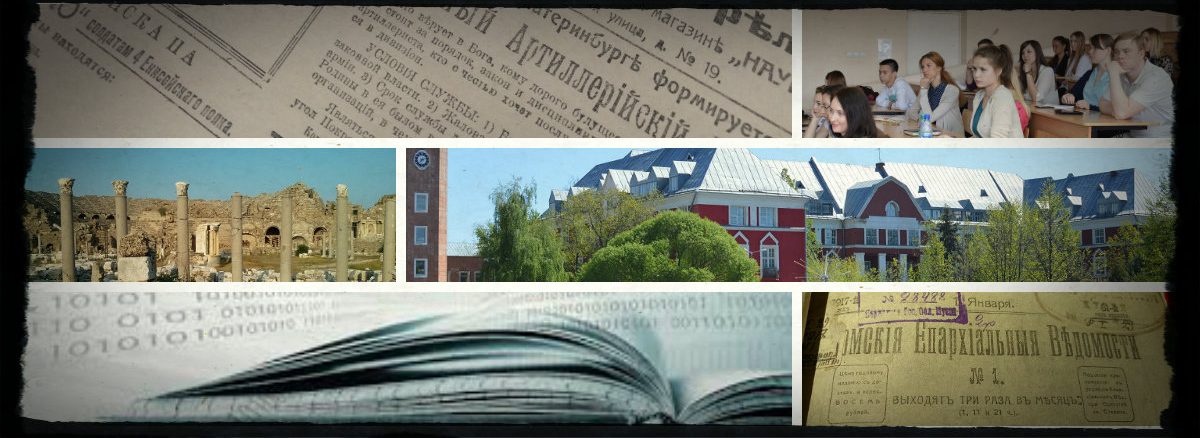Ключевое слово: Digital History
Roy Rosenzweig Center for History and New Media (RRCHNM)
Since 1994 under the founding direction of Roy Rosenzweig, the Roy Rosenzweig Center for History and New Media (RRCHNM) at George Mason University has used digital media and computer technology to democratize history—to incorporate multiple voices, reach diverse audiences, and encourage popular participation in presenting and preserving the past. The center itself is a democratic, collaborative space where over fifty scholars, developers, designers, and researchers work together to advance the state of the art.
RRCHNM uses digital media and technology to preserve and present history online, transform scholarship across the humanities, and advance historical education and understanding. Each year RRCHNM’s many project websites receive over 20 million visitors, and over a million people rely on its digital tools to teach, learn, and conduct research.
Источник описания:Roy Rosenzweig Center for History and New Media (RRCHNM)
The September 11 Digital Archive
The September 11 Digital Archive uses electronic media to collect, preserve, and present the history of September 11, 2001 and its aftermath. The Archive contains more than 150,000 digital items, a tally that includes more than 40,000 emails and other electronic communications, more than 40,000 first-hand stories, and more than 15,000 digital images. In September 2003, the Library of Congress accepted the Archive into its collections, an event that both ensured the Archive's long-term preservation and marked the library's first major digital acquisition.
Initially funded by a major grant from the Alfred P. Sloan Foundation and organized by the American Social History Project at the City University of New York Graduate Center and the Roy Rosenzweig Center for History and New Media (RRCHNM) at George Mason University, the Archive is contributing to the on-going effort by historians and archivists to record and preserve the record of 9/11 by collecting and archiving first-hand accounts, emails and other electronic communications, digital photographs and artworks, and a range of other digital materials related to the attacks. The Archive is also using these events as a way of assessing how history is being recorded and preserved in the twenty-first century and as an opportunity to develop free software tools to help historians to do a better job of collecting, preserving, and writing history in the new century.
Our goal is to create a permanent record of the events of September 11, 2001. To these ends the Archive has partnered with the Library of Congress, which in September 2003 accepted a copy of the Archive into its permanent collections – an event that both ensured the Archive’s long-term preservation and marked the Library’s first major digital acquisition.
In 2011, the project received a Saving America's Treasures Grant, from the National Park Service and the National Endowment for the Humanities, to ensure its long-term perservation. During this grant, RRCHNM migrated the Archive to theOmeka software and relaunched the website on a more stable platform.
Through maintaining these collections, we hope to foster some positive legacies of those terrible events by allowing people to tell their stories, making those stories available to a wide audience, providing historical context for understanding those events and their consequences, and helping historians and archivists improve their practices based on the lessons we learn from this project.
Источник описания:The September 11 Digital Archive
Spatial History Project
The Spatial History Project at Stanford University is a place for a collaborative community of students, staff, and scholars to engage in creative spatial, textual and visual analysis to further research in the humanities.
We are part of the Center for Spatial and Textual Analysis (CESTA) along with Humanities+Design and the Literary Lab on the top floor of Wallenberg Hall.
We continually seek fruitful collaborations with faculty at Stanford and beyond, and hire motivated students year round. If you are interested in learning more, please contact Matt Bryant.
Источник описания:Spatial History Project
Documenting Digital History
Digital history is an emerging and rapidly changing academic field. The purpose of the Digital History Projectis to educate scholars and the public about the state of the discipline by providing access to:
- interviews with scholars about topics related to digital history;
- presentations and essays about the field by noted scholars;
- syllabi and student projects from courses in digital history;
- reviews of major online projects and of tools which may be of use to digital historians;
- indices of peer-reviewed scholarship and digital projects;
- a directory of historians practicing digital history; and
- a clearinghouse of current events and news items of interest.
Partners
The site is made available through the generous support of the John and Catherine Angle Fund. It received production assistance from the New Media Center at the University of Nebraska-Lincoln.
Источник описания:Documenting Digital History
